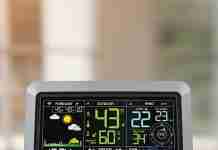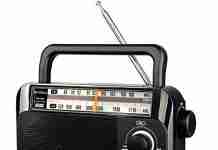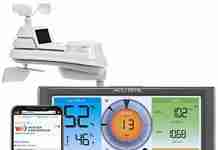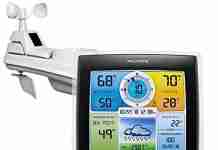When it comes to setting up weather stations, one of the key decisions to make is whether to place them in the sun or shade. This seemingly simple question can have significant implications on the accuracy and reliability of the data collected. In this article, we will explore the factors that influence this decision and discuss the benefits and drawbacks of both options. So, whether you’re a weather enthusiast or curious about how meteorologists gather their information, join us as we navigate the sunny and shady aspects of weather station placement!
Review contents
Factors to consider when choosing a location for a weather station
When deciding where to place a weather station, there are several crucial factors to consider. These factors will determine the accuracy and reliability of the weather data collected. Here are the key considerations we take into account when determining the ideal location for a weather station:
Sun exposure
Sun exposure plays a significant role in weather station measurements. Direct sunlight can affect various sensors and instruments, leading to inaccurate readings. For instance, the heat from the sun can cause temperature sensors to register higher values than the actual ambient temperature. Therefore, it is essential to consider the potential issues associated with placing a weather station in direct sunlight.
Shade
While direct sun exposure can lead to measurement inaccuracies, excessive shade can also affect the performance of a weather station. Placing the station in the shade may result in cooler temperature readings and lower evaporation rates. Additionally, the shade can obstruct rainfall measurements, preventing the collection of accurate data. Therefore, it is crucial to strike a balance between sun exposure and shade when selecting the location.
Ambient temperature
The location of a weather station can significantly influence ambient temperature measurements. Placing the station near structures or urban areas where heat is emitted can result in artificially high temperature readings. On the other hand, positioning it in open fields or near bodies of water may provide more accurate representations of the true ambient temperature. Sun exposure and shade also impact temperature readings, emphasizing the need for careful consideration when determining the station’s location.
Wind
Wind is another crucial factor to consider. Excessive wind can interfere with the accurate measurement of various weather elements. Placing the station in an area shielded from strong winds, such as behind buildings or trees, can help minimize wind interference. By strategically locating the weather station to reduce wind impact, more reliable and consistent data can be obtained.
Rainfall
The placement of a weather station in relation to sun exposure and shade can significantly affect rainfall measurements. Areas with excessive shade, such as under dense trees or buildings, may receive less rainfall, leading to underreported precipitation levels. Conversely, placing the station in direct sunlight might cause evaporation of raindrops before they are measured, resulting in lower readings. To ensure accurate rainfall data, it is crucial to select a location that strikes a balance between sun exposure and shade.
Snow accumulation
Accurately measuring snow accumulation can be challenging, particularly in areas with varying sun exposure and shade. In direct sunlight, snow can melt more quickly, leading to the underestimation of snowfall totals. Conversely, placing the station in the shade may result in higher snow accumulation due to reduced melting. Balancing the location between sun and shade can help mitigate these challenges and provide more accurate snowfall measurements.
False readings
Weather stations in different sun and shade conditions can sometimes produce false readings. These false readings may be the result of sensor malfunction, incorrect calibration, or data interference. In areas with significant temperature fluctuations between direct sunlight and shade, the sensors may struggle to adjust accurately. Understanding the potential sources of false readings and regularly calibrating the instruments can help mitigate these issues and ensure data accuracy.
Accuracy
The accuracy of weather station data is of utmost importance. Weather measurements are relied upon by various sectors, including agriculture, transportation, and emergency services, to make informed decisions. Inaccurate data can lead to significant consequences, both financially and safety-wise. Placing the weather station in a location that minimizes the potential for measurement inaccuracies, such as an area with consistent sun exposure and minimal shade obstruction, is essential to maintaining a high level of accuracy.
Maintenance
In addition to choosing a suitable location for a weather station, regular maintenance is crucial to ensure accurate and reliable data. Weather stations should be regularly inspected for sensor calibration, cleanliness, and any potential damage. The surrounding vegetation and structures should be monitored to prevent obstructions that may compromise the accuracy of measurements. By prioritizing the maintenance of the weather station, we can ensure the longevity and dependability of the collected data.
Conclusion
When selecting a location for a weather station, multiple factors should be carefully considered. The balance between sun exposure and shade plays a crucial role in achieving accurate measurements for temperature, rainfall, and snow accumulation. Minimizing wind interference and mitigating false readings are also essential aspects of data reliability. Finally, regular maintenance of the weather station is necessary to ensure ongoing accuracy. By taking these factors into account, we can establish a weather station that provides consistent and trustworthy data, benefiting various industries and individuals who rely on accurate weather information.



































